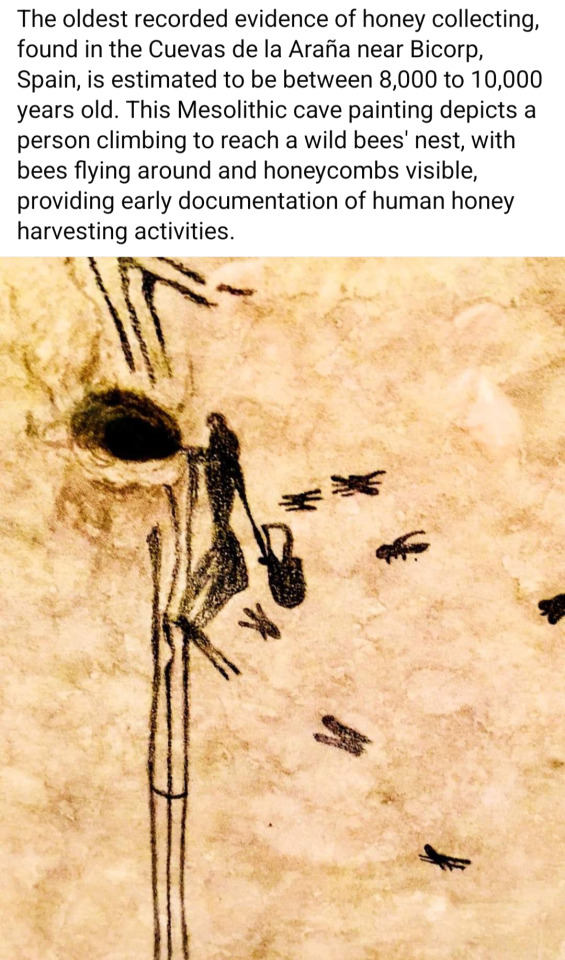#mesolithic
Explore tagged Tumblr posts
Text




Prehistoric Petrosphere, Alford, Aberdeenshire, 3300 to 2000 BCE, Kelvingrove Museum, Glasgow
#ice age#iron age#bronze age#stone age#prehistoric#prehistory#neolithic#mesolithic#paleolithic#archaeology#stone ball#stone carving#Petrosphere#ancient cultures#ancient crafts
597 notes
·
View notes
Text
Time Travel Question 82: Miscellaneous V
These Questions are the result of suggestions from the previous iteration.
This category may include suggestions made too late to fall into the correct grouping.
Please add new suggestions below if you have them for future consideration.
#Time Travel#Etruscans#Necropolis#Cerveteri#Ancient World#Joust-A-Bout#Dschunke ride#Great Adventure#Defunct Rides#Amusement Park#20th Century#Jōmon period#Japanese History#African History#Ancient History#History of Textiles#Fashion History#Silk#Asian history#Chinese History#Tierra del Fuego#Indigenous History#Mesolithic#Pre-History#Yangshao culture
25 notes
·
View notes
Text










ANCIENT ART 🏺 love, ur local art mom 🩵
link, more information, and disclaimers under the cut ✂️
link to the last week tonight episode here
hi I’m annemarie and I’m an art historian! not adjuncting for the first time in five years was rly hard for me so I threw some slides together so I could still (sort of) teach the same material as my language of art class but a) I threw these slides together for instagram so space was/is limited and b) language of art is a ten week run through art history so I’m presenting only the most accessible information here – there’s so much more to this art period! – please don’t expect it to be comprehensive and please do ask if you have any questions!
oh p.s. my first ever class of art history students came up with the name ‘art mom’ for me at the end of the quarter and yes it does make me cry if I think about it too long thanks so much for asking
#annemarie teaches art history#art history#ancient art#ancient#art#venus de milo#the stone age#stone age#stone#paleolithic#mesolithic#neolithic#jōmon pottery#majiayao#the bronze age#bronze age#bronze#shang dynasty#the iron age#iron age#iron#ancient greece#classical#hellenistic#silver stater#terracotta#hydria#palace of knossos#art mom#annemarieyeretzian
49 notes
·
View notes
Text

Mesolithic couple with a dog illustrated by Ettore Mazza.
25 notes
·
View notes
Text


One of the most interesting finds found at the Star Carr Mesolithic site is that of the completely intact digging stick. A complete tool for unearthing edible roots and tubers; they are still used in parts of the world today.
'Digging Stick' Poem by The Silicon Tribesman. All Rights Reserved, 2025. Repost only with credits.
Part of the forthcoming 'Star Carr: Selected Poems' chapbook release in April 2025.
#star carr#nature poem#poem#poetry#poets#poetic#original writing#original work#prehistory#prehistoric#settlement#digging stick#new work#archaeology#yorkshire#york#mesolithic
30 notes
·
View notes
Text
Stone Circles in France
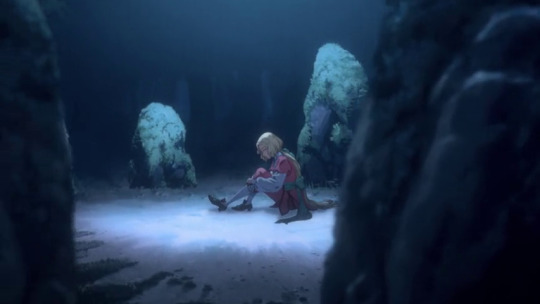
Something I have wanted to talk about more ever since the first trailer dropped about a month ago, is the stone circle near Machecoul, that seems to play somewhat a big role in Maria's life.
We first meet Richter and Maria at the stone circle, and in season 2 we learn that she learned magic there. This is why Tera takes her there to try to control her magic once more.
So, obviously you might ask: "Why are there old stones in a circle somewhere in France?"
As a European of course, I have grown up with the Asterix comics, and hence my mind just went: "Oh, yeah, they are there because of the Galls. Duh." Though then I did some google-fu and found out that it is not quite that easy.
So, let's talk about Celts and stones.
As I spoke about yesterday: We have sadly super little information about the celts and their precursors, because the colonialization within Europe (partly through the Romans, partly through other groups) has mostly just erased most what was once known of this mostly oral culture. We know a bit about the Gaels in Ireland and Scotland (mind you: We also know that the Gaels in Ireland were not exactly the same as those in Scotland), but for everyone else we know a couple of legends that survived as oral history for long enough that someone who thought it important to record it. Part of the reason in fact that the Gaels managed to hold onto more than anyone else is that they had secret Bard Colleges until into the 18th century, where they literally taught people their oral traditions, despite it being forbidden.
Back to the stone circles.
Celts definitely loved to build structures that are made up of aesthetically aranged stones. Think Stonehenge, which is probably one of those structures everyone kinda knows. But Stonehenge is by far not the only of these sides. And in fact they are scattered all over the former celtic areas.
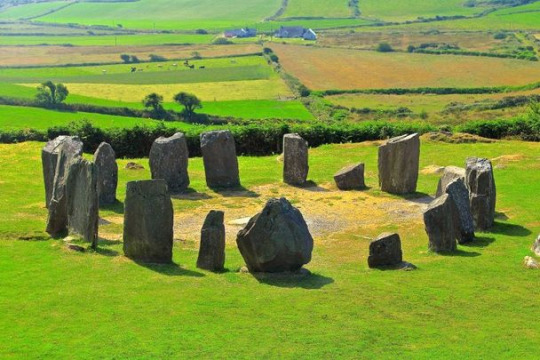

These two are both from Ireland, where we have the best preserved of those stone circles. But there are also several of them in France.
The best known stones in France are actually not in a circle formation, though. Those are the Carnac stones in Western France.
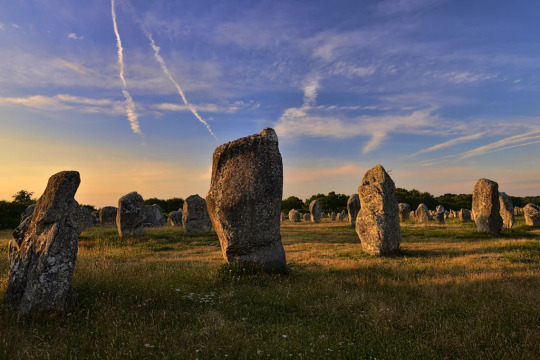
Those are located about 160km northwest of Machecoul. So a good bit, but still in the same general area. Another fairly well known stone formation - in this case once more a circle - is the Kergonan Cromlech. Which is again about 160km away from Machecoul.
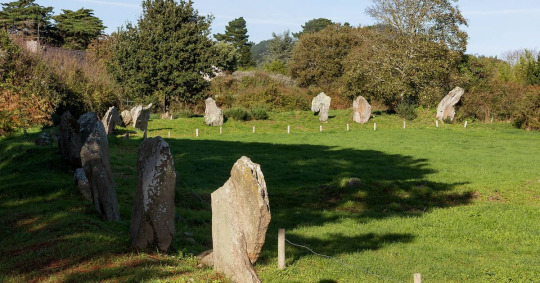
And here is the thing: We actually do not know what is actually up with those stone formations. We know that some of them were created to commemorade the grave of a king or another important burial. We also know that some of them are aligned with certain celestial events (like the solstices). So the general idea is that those stone structures, that are mainly between neolithic and mesolithic. Which is one of the biggest problems.
See, the celts existed with their own culture throughout these areas (mainy the British Islands, France, the Iberian Peninsula and at times also in the area of todays Belgium) at times until about 1000CE. However, those stone structures were build generally speaking between 4500BC and 1500BC. So even those Celts that later were around might not even have known why those structures have been build.
The general consensus between archeologists and anthropologists is, that they were ritual sites related to religious practice. But you should also know that generally speaking archeologists and anthropologists will usually just go "ritual!" whenever we find something and are not certain what it was for. (See also the many things that might have well been dildos, which makes archeologists go: "Eh, probably some ritual practice about worshipping male fertility?!")
Though to be fair: The fact that we know some of those structures are definitely used in terms of graves - and to celebrate certain celestial events - makes it quite likely that there was a ritual component to it.
This is a map of the stone structures we know to be located in France. You might note that none of them is really close to Machecoul. Though given that Machecoul is still fairly close to the Southwestern cluster, it would not to be too off to say: "Oh, yeah, actually there was one but that got destroyed before we found it."
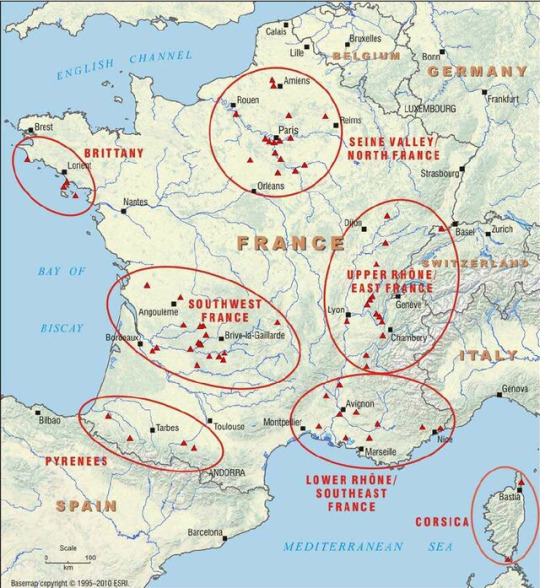
My big question is, what this means about Maria's powers - especially as I was informed that the fact that this is a stone circle of this kind was made very clear in the scripts from the very beginning on.
Especially given that it is called out twice that she might draw the creatures from the Otherworld...
#castlevania#castlevania netflix#castlevania nocturne#maria renard#french history#celtic#celts#cletic history#european history#neolithic#mesolithic
33 notes
·
View notes
Text

Source Source 2 (source 2 has a 360 view of the Bear.)
"A beautiful Mesolithic amber figure of a bear. It washed up on a beach at Fanø in Denmark from a submerged Mesolithic settlement under the North Sea. 12500-3900 BC, now on display at the National Museum of Denmark"
15 notes
·
View notes
Text
The cave drawings in the Magura Cave are estimated to have been made between 10'000 & 8'000 years ago, a period covering the Epipaleolithic/Mesolithic, late Neolithic, Eneolithic and early Bronze Age.


Thought to represent important events of the society that had occupied the cave—religious ceremonies, hunting scenes, and depictions of deities unique to the Balkan peninsular—the Fertility Dance and the Hunting Ceremony rank among the most noteworthy paintings.


(source)
#mesolithic#magura cave paintings#neolithic#early bronze age#archaeology#cave paintings#cave art#prehistory#ancient beliefs
15 notes
·
View notes
Text
youtube
Super random I know, but I love listening to archeology and paleontology videos while I draw. This shit's super interesting ngl
9 notes
·
View notes
Text

Mesolithic Huntress
A Mesolithic huntress has her eyes out for game in the forests of western Europe around 9,000 years ago. Hunting in Mesolithic Europe was probably less exciting than during the preceding Paleolithic, as most of the iconic Pleistocene megafauna had already died out, but at least the people living there would have enjoyed warmer weather!
#mesolithic#prehistoric#stone age#tribal#hunter-gatherer#european#black woman#woman of color#dark skin#bipoc#paleoart#digital art#art
7 notes
·
View notes
Text










Iron Age Living at The Scottish Crannog Centre, Loch Tay, Scotland
#ice age#bronze age#iron age#stone age#prehistoric#prehistory#neolithic#mesolithic#paleolithic#archaeology
505 notes
·
View notes
Text

Map of Doggerland during the Mesolithic.
40 notes
·
View notes
Text
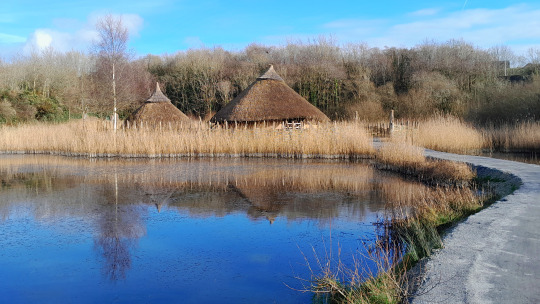
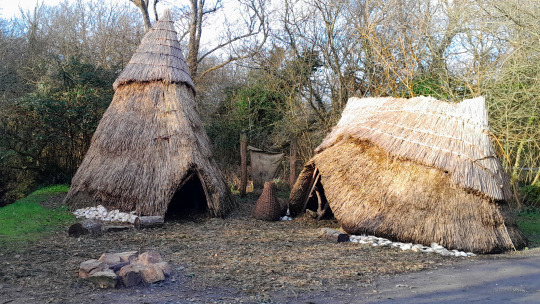
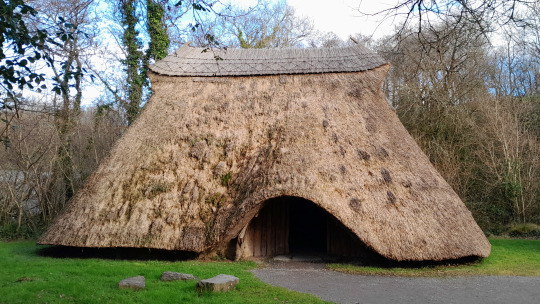
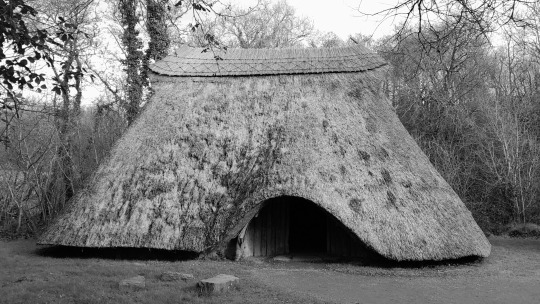
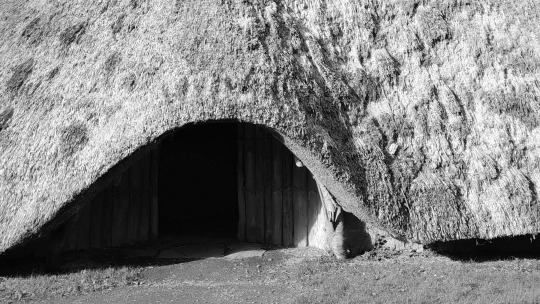
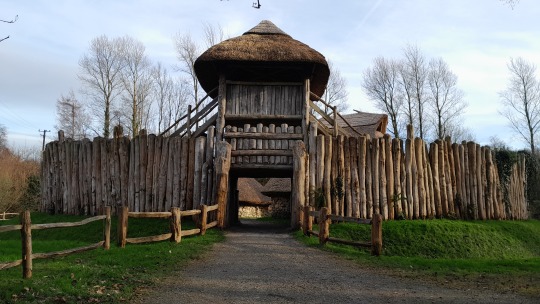

The Irish National Heritage Park is one of the coolest places I've visited in Ireland. Not only does it preserve some actual nature, but there's also reconstructions of various (pre)historic houses and such - even a crannog! The photos above show:
-crannog, on a small artificial island on a lake
-mesolithic huts of hunter-gatherers
-neolithic hut of agriculturalists
-medieval ringfort
-Christianized middle ages
#archaeology#experimental archaeology#irish national heritage park#mesolithic#neolithic#prehistory#history#medieval#travel#photo#ireland#irish history#ringfort#crannog
111 notes
·
View notes
Text

Recent find. Orange Mesolite with calcite. Deshgaon, Khandwa District, Madhya Pradesh, India. Available tomorrow on our site
Www.Goldenhourminerals.Com
104 notes
·
View notes
Text


At Star Carr Mesolithic site, several lakeside wooden platforms were constructed for an unknown purpose; potentially for the launching of boats or to gain access to the water as the site changed and silted up slowly with mud over time. The platforms required the felling of a large number of trees and extensive construction.
'Water's Edge' Poem by The Silicon Tribesman. All Rights Reserved, 2025. Repost only with credits.
Part of the forthcoming 'Star Carr: Selected Poems' chapbook release in April 2025.
#star carr#mesolithic#prehistory#poetry#creative#poets#poem#poems about nature#landscape#territory#prehistoric#wild places#water's edge#settlement#relationship
21 notes
·
View notes
